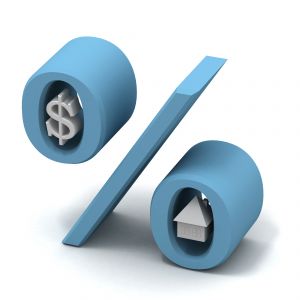
By GoldenGirlFinance.com
All of the recent changes to Canadian mortgage rules make it pretty clear: Regulators want to dissuade first-time homebuyersfrom purchasing a property with nothing down. Yet, despite changes that did away with 100 percent financing back in 2008, and the recent barring of cash-back mortgages by the Canada Mortgage and Housing Corp., buyers can still manage to take a step up the real estate ladder with little upfront cash. The question is - does it make financial sense?
Let’s weigh the options….
Why it's best to have a robust down payment
While saving for a sizable down payment can be a huge financial burden, it's an investment that can save you a considerable amount of cash in the long run. Remember – the smaller your down payment, the riskier you look to a bank. Low down payment home mortgages require more leverage, and high leverage borrowers are open to a substantially higher risk of bankruptcy.
While larger down payments inherently help lenders, they also benefit borrowers in a variety of ways. This is especially true for buyers who are planning to sell in the early years of their residential mortgage. With the recommended 20 percent down payment, you'll generally have enough equity built in to your property to cover closing costs, even if there has been a 10 percent decline in the market value of the home.
Alternative down payment options
Coming up with tens of thousands of dollars for a down payment isn't always an option, especially when you're a young, first-time homebuyer. Houses are expensive - no ifs, ands or buts about it! At a time when the average Canadian home price hovers around $356,000, the Canadian Association of Accredited Mortgage Professionals has found that more than one-fifth of all renters have less than $5,000 put away for a down payment.
So what's a cash-poor house hunter to do?
For many, the answer is to seek out an alternative down payment source.
Borrowing from nontraditional sources
When buying a home in Canada, you generally need a minimum down payment of 5 percent of the purchase price of the home. It's worth noting at this point that legislation prohibits you from borrowing that 5 percent from your mortgage lender if that lender is a bank or federal trust company.
However, you're free to borrow your down payment from a number of different credit sources. Popular choices include a line of credit, personal loan, or even a credit card. Of course, tossing your down payment onto your VISA isn't the most responsible way to manage your investment (don’t do it!).
If you're thinking about borrowing your down payment, get ready for some serious interest charges. More often than not, the interest rate on a borrowed down payment will be much higher than that on your mortgage, or have a riskier variable rate, at the very least.
The cash-back option
It's worth noting that any lender who isn't federally regulated (like a credit union, for example) can still offer cash-back down payment mortgage products. Not surprisingly, the interest rates on these offers are astronomical. Homebuyers are also required to come up with the cash for closing costs, including legal and inspection fees, as well as land transfer taxes, and other fees.
Be wary: There's speculation that the loophole that enables some institutions to offer this product will be eliminated in 2013 through new mortgage insurer and/or provincial regulations.
The RRSP Home Buyers’ Plan
First-time homebuyers are encouraged to take advantage of the government's Home Buyers’ Plan (HBP) in order to draw upwards of $25,000 from their RRSPs in order to fund their down payment. And while this is a great option, it comes with a few red flags. First, draining your retirement savings in your 20s and 30s means you'll risk losing years of tax-deferred investment gains. Secondly, any installments that aren't paid back before the deadline are taxed as income on that year's income tax statement. Statistics show that as many as one-quarter of HBP participants miss or underpay on an installment.
Going with a gifted down payment
Generous relatives are often willing to help fund a down payment through a financial gift to a first-time homebuyer. In most cases, however, lenders will only consider gifted down payments from a parent, grandparent or sibling.
It's important to note that a "gifted" down payment is very different from a personal loan from a relative. With a gift, there's no expectation to pay the relative back. If you're borrowing money from a relative in order to make ends meet, this is not a gift. It's an additional liability that your lender will need to consider as it increases a borrower's debt obligations.
Proceed with caution & get advice
When it comes to buying a house with someone else's money, always remember to be careful. Just because you qualify for a cash-back mortgage or have enough squirreled away in your RRSP doesn't mean you're ready to shoulder the responsibilities of a mortgage. Talk with an accredited mortgage broker and your trusted financial advisors before you make your final financing decisions.

